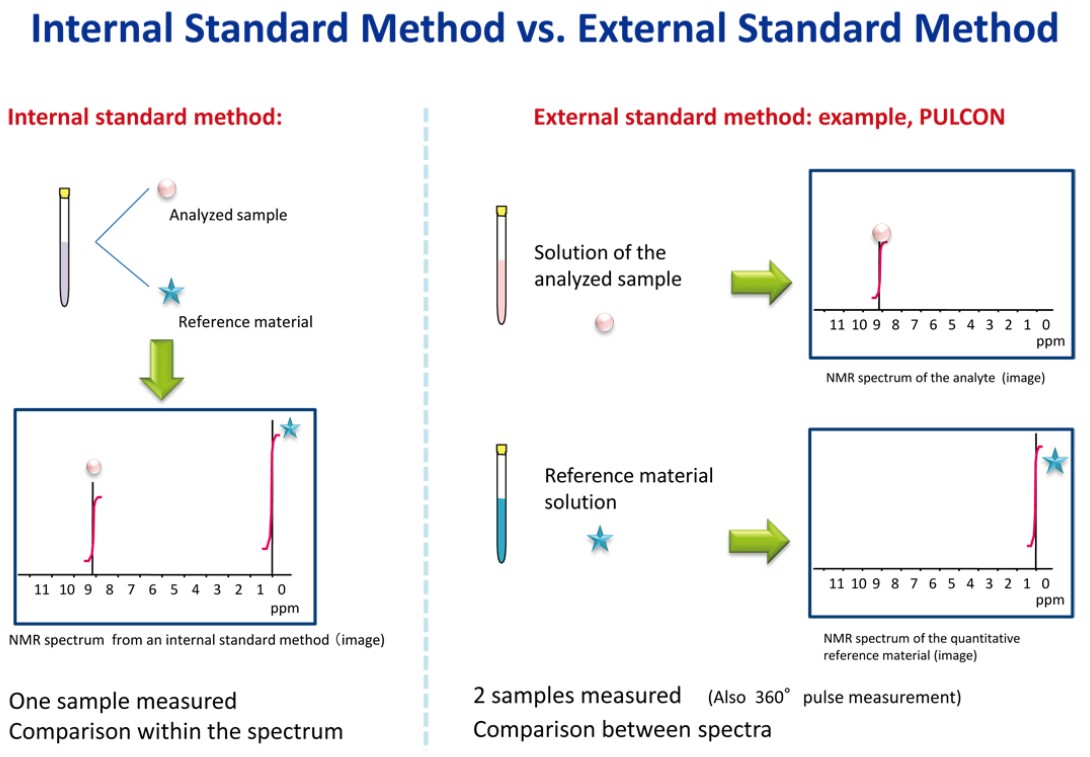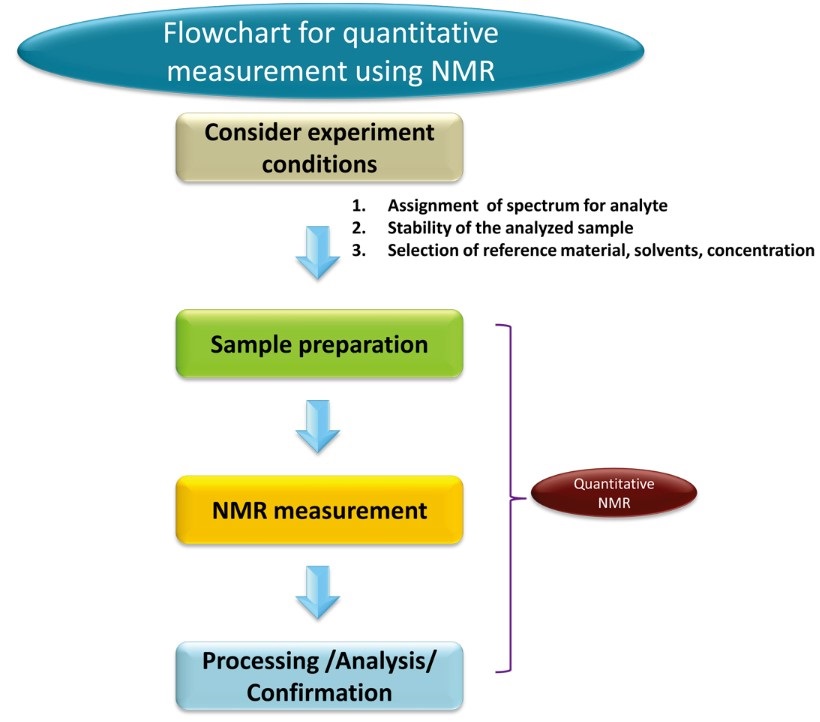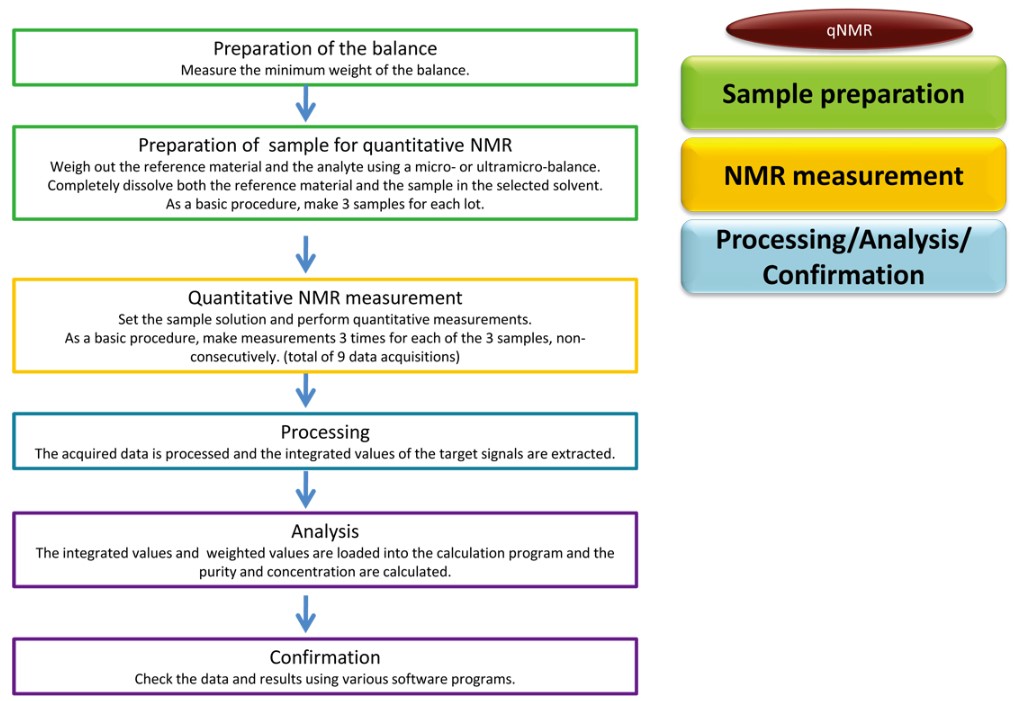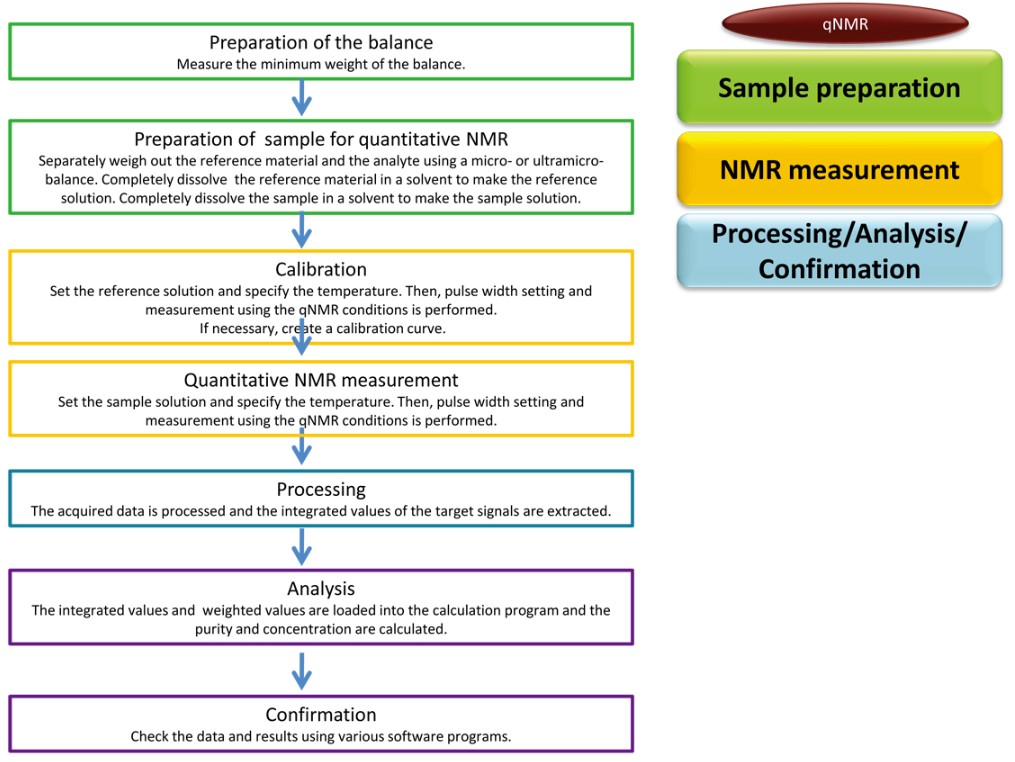Let’s try doing quantitative NMR
Issue 8
In the previous seven issues we have introduced an overview, including the background of quantitative NMR. From this issue we will present practical content.
Preparation
Before actually performing quantitative NMR measurements, there are some preparations required beforehand. These are (1) selecting a quantitative measurement method (internal standard method or external standard method), (2) determining the sample preparation conditions (selection of solvent and reference standard for qNMR, the stability of the sample solution), and (3) confirming that signals suitable for quantification appear on the 1H-NMR spectrum. Here, we will briefly introduce the selection of the quantitative measurement method.
For the internal standard method the reference standard for qNMR is prepared in the same solution with the analyte. For the external standard method the reference standard for qNMR and analytes are prepared separately. A point to consider when deciding which method to choose is whether accuracy or recovery of the sample has a higher priority. If you want to emphasize accuracy, the internal standard method is recommended. On the other hand, if a precious material that is a single isolated substance is being analyzed, the external standard method is probably better.

Fig.2 Internal standard and external standard method
Analytical Scheme of Quantitative NMR
Quantitative NMR with either the internal standard method or the external standard method has three steps:
Sample preparation → NMR measurement → Analysis.

Fig.1 qNMR analysis flowchart
1) Internal standard method (Fig.3 Procedure for the internal standard method)
Sample Preparation: Confirm the precision of the balance to be used, precisely weigh the reference standard for qNMR and the analyte. It is recommended to create 3 samples from the same lot.
NMR measurement: Perform 1H measurement under optimized conditions for quantification. One of the parameters to be noted is the pulse repetition time setting. Set a sufficiently long repetition time based on T1 (longitudinal relaxation time). We recommend that you perform three measurements on each qNMR sample.
Analysis: When processing the FID, some processing can be done automatically, but it is recommended that you check by visual inspection.

Fig.3 Procedure for the internal standard method
2) External standard method (Fig.4 Procedure for the external standard method)
Sample Preparation: Confirm the accuracy of the balance to be used, precisely weigh the reference standard for qNMR and the analyte separately. In this case, it is important to know the precise molar concentration of the reference standard for quantification.
NMR measurement: Measurement is performed under quantitative conditions, but calibration such as temperature and pulse width measurement is necessary to compare the spectrum of the reference solution and the spectrum of the analytical sample solution.
Analysis: As with the internal standard method, visual inspection after processing is necessary. When calculating, depending on the measurement parameters of each qNMR sample, the calculations must include the calibration factors.

Fig.4 Procedure for the external standard method
Are you a medical professional or personnel engaged in medical care?
No
Please be reminded that these pages are not intended to provide the general public with information about the products.
